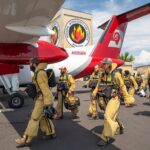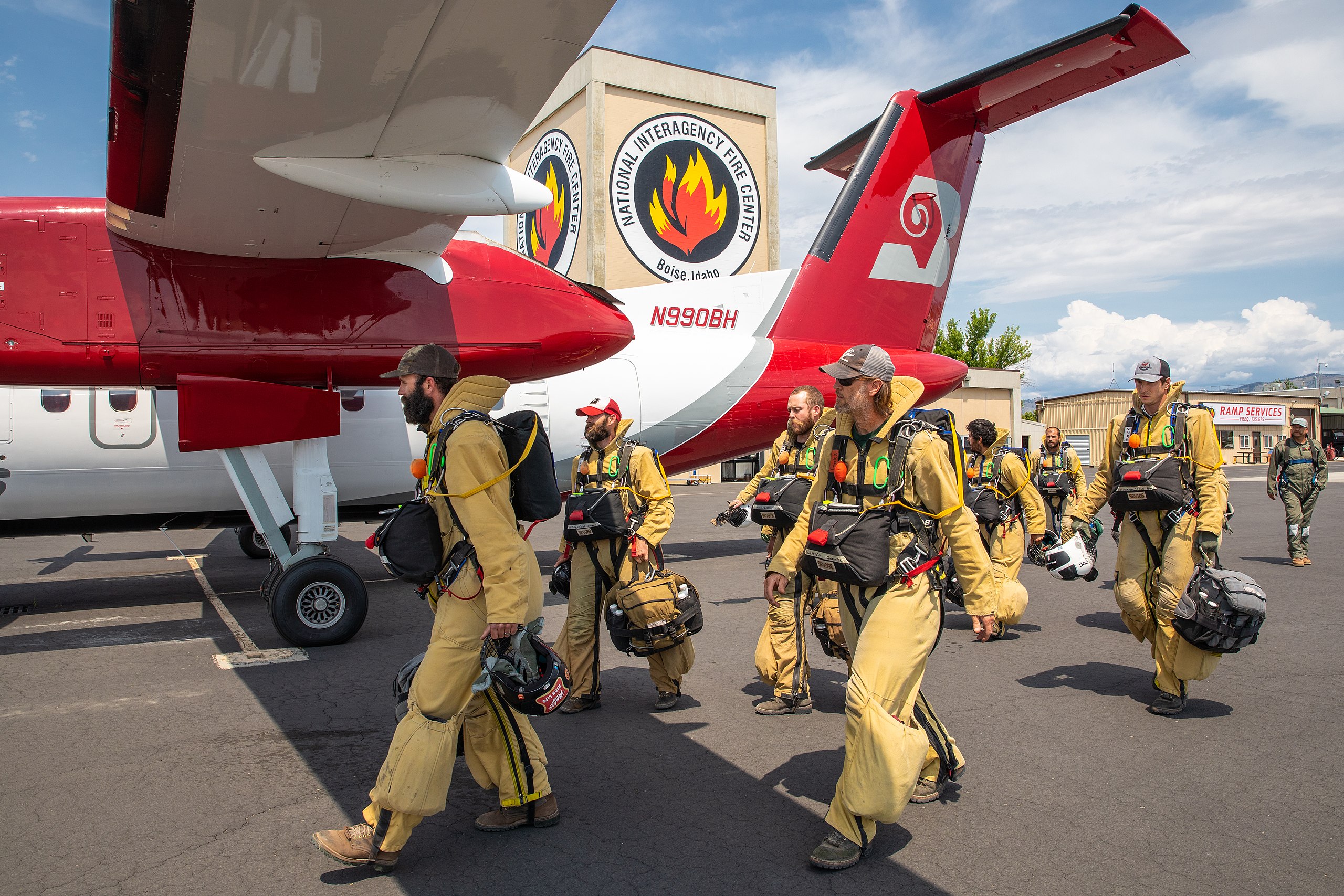
Bureau of Land Mangement smokejumpers prepare for a training jump in Boise, Idaho. (DOI/Neal Herbert)
By: Riley Thompson
In the remote wilderness, where flames devour landscapes at astonishing speed, an elite group of firefighters leaps into action—quite literally. Known as smokejumpers, these brave individuals parachute into some of the most challenging and remote wildfire areas to contain blazes before they grow out of control. This article takes a deep dive into the fascinating, high-risk world of smokejumping, examining its history, unique training process, evolving techniques, and the critical role it plays in wildfire management today.
The History of Smokejumping: Origins of a Unique Firefighting Method
Smokejumping as a firefighting tactic dates back to the 1930s when the United States Forest Service (USFS) sought faster ways to combat wildfires in rugged, often inaccessible terrain. With the West’s vast, forested regions at risk, early aerial firefighting was an idea born of necessity. The concept of dropping firefighters from aircraft into remote areas quickly gained traction after a 1934 experiment in Washington State showed promise.
The first official smokejumping operation occurred in 1940, with the inaugural crew jumping into the Nez Perce National Forest in Idaho. The USFS organized the first dedicated smokejumper base in Missoula, Montana, where training, gear testing, and operational procedures were refined. This initial experiment evolved into a specialized, elite firefighting division that has since expanded across the western United States and into countries with wildfire-prone landscapes.
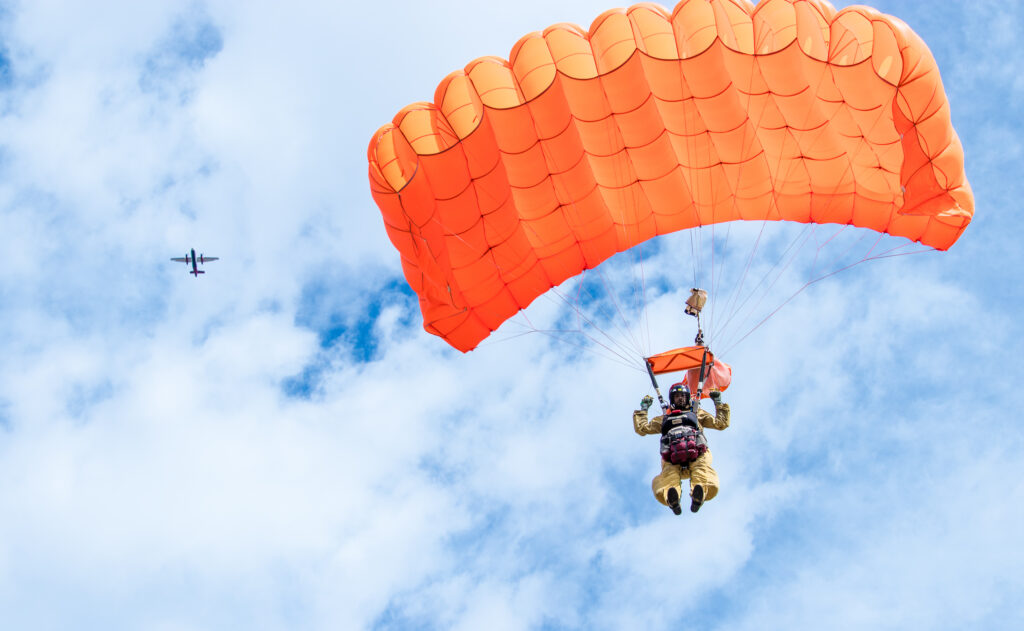
The Training Process: Building Skills and Stamina
Smokejumping is not a career for the faint-hearted. The training required to become a smokejumper is rigorous, and only a small percentage of applicants complete it. The selection process begins with physical assessments to ensure candidates possess the strength, stamina, and agility required for the job. Basic requirements include running, push-ups, pull-ups, and a gear-laden hike—a test designed to mimic the physical demands of firefighting in remote terrain.
Once through the initial stages, recruits undergo intensive training that covers parachute maneuvers, survival tactics, and firefighting strategies. The specialized nature of their work demands that smokejumpers are not only skilled firefighters but also proficient in handling emergencies without backup. Training covers:
1. Parachute Training
Smokejumpers practice static line parachute jumps, which differ from freefall techniques. Static lines deploy the parachute immediately after leaving the plane, providing a safer descent into forests and mountainous areas. Accuracy is paramount, and jumpers train to land within a small target zone, minimizing the time and energy required to reach fires.
2. Survival Skills
Smokejumpers might work alone or in small teams, often with limited supplies. They are trained to build shelters, navigate through dense wilderness, and ration food and water. This skill set ensures that if conditions turn, they can survive until a rescue operation can reach them.
3. Fire Suppression Tactics
Techniques like digging firelines, using drip torches for controlled burns, and employing hand tools effectively are drilled into recruits. Mastering these tactics is critical to prevent wildfires from spreading. Smokejumpers also learn how to coordinate with ground crews and air support, as seamless communication is key in dangerous situations.
4. Medical and First Aid Training
Medical training is essential. Smokejumpers must be able to stabilize injuries sustained in the field, whether from the jump, environmental hazards, or the fire itself. Some even undergo advanced wilderness medical courses to prepare for remote care.
The training period typically spans 4-6 weeks, during which trainees complete a series of jumps under varying conditions. Successful candidates are deployed to regional bases, poised to respond at a moment’s notice when a wildfire is detected in inaccessible areas.
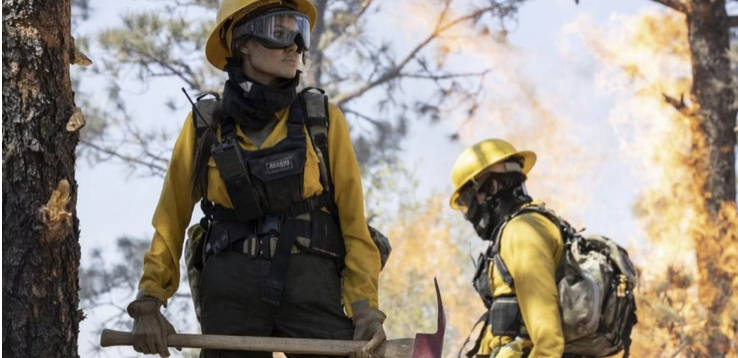
The Gear: Equipping Smokejumpers for Survival
Every piece of smokejumping gear is designed with both durability and functionality in mind. Given the nature of their work, smokejumpers must rely on minimal, highly versatile equipment. Some key components include:
• Parachute and Harness Systems: Smokejumpers use ram-air parachutes, which offer precision steering capabilities for tight landings. A rugged harness provides stability and safety during descent.
• Protective Clothing and Helmet: Flame-resistant suits, gloves, and helmets with face shields protect against heat and debris. Boots with high traction allow smokejumpers to navigate rugged terrain.
• Firefighting Tools: Essential tools include the Pulaski, a specialized axe with an adze on one side, for cutting through vegetation and digging firelines, and the McLeod, a combination rake and hoe for clearing ground fuel.
• Survival Kit: Given their remote work locations, smokejumpers carry compact survival kits containing food rations, water purification tablets, a first aid kit, a fire shelter, and a navigation device. These essentials can sustain them in the event of delayed extraction.
The weight of this equipment can exceed 100 pounds, so smokejumpers must have exceptional physical strength to perform effectively while carrying the load. The gear is constantly evolving, with research into lightweight, flame-resistant materials and advanced navigation systems underway.
A Typical Mission: The Smokejumper’s Journey
Each smokejumper mission begins with a dispatch call from the coordination center. When a wildfire is reported, smokejumpers are scrambled to the nearest airbase, where they board planes like the Dornier 228 or the De Havilland DHC-6 Twin Otter, chosen for their ability to operate in remote locations. Onboard, jumpers gear up, run through final checks, and receive updates on the fire’s position and intensity.
Upon reaching the jump zone, they exit the plane in teams of two to eight, aiming to land as close as possible to the fire. Once on the ground, they assess the fire’s behavior, which depends on variables such as wind speed, terrain, and vegetation type. The objective is to create firebreaks by clearing vegetation and deploying controlled burns that halt the blaze’s advance.
A single mission can span anywhere from a few hours to several days. When containment efforts are complete, smokejumpers signal for extraction or trek to the nearest accessible area. In some cases, they hike several miles through rugged terrain to reach pickup points.
Innovations and Evolving Techniques in Smokejumping
Technological advancements and environmental challenges are reshaping smokejumping tactics. Key innovations and changes include:
• GPS and Satellite Communication: GPS devices and satellite radios now enable smokejumpers to communicate with command centers more effectively, ensuring accurate navigation in dense wilderness and faster coordination with aerial support.
• Drones and Thermal Imaging: Drones equipped with thermal imaging help smokejumpers gain insights into fire behavior and locate hotspots. This data allows smokejumpers to target high-risk areas, making their operations more efficient.
• Data-Driven Fire Prediction Models: Advanced fire behavior models, integrating real-time weather data and fuel conditions, help smokejumpers anticipate a fire’s spread. These models are particularly useful in planning initial suppression tactics.
• Ecological Fire Management: With the growing recognition of fire’s role in ecosystem health, smokejumpers are increasingly trained to manage fires in ways that align with ecological goals. Controlled burns are used to reduce fuel loads without suppressing beneficial fires, contributing to more balanced forest management.
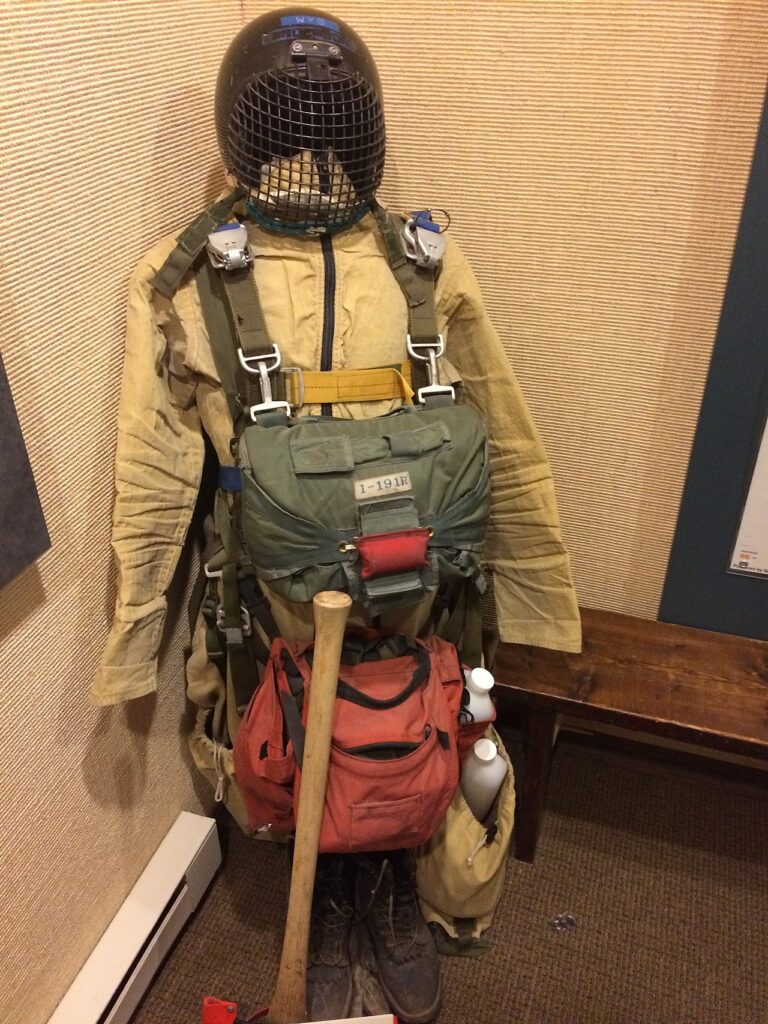
The Risks and Rewards of Smokejumping
Smokejumping is one of the most hazardous professions, requiring mental resilience and physical courage. Parachuting into a forest fire zone presents inherent risks—erratic winds, poor visibility, and potential for injury. On the ground, smokejumpers face extreme temperatures, toxic smoke, and unpredictable fire behavior, all while being far from immediate medical help.
Despite these challenges, many smokejumpers find their work deeply rewarding. They take pride in protecting forests, communities, and natural habitats. The sense of camaraderie within smokejumper teams is also profound; each mission requires absolute trust in one another’s skills and commitment.
For many, the appeal lies in the sense of adventure and purpose. Smokejumping offers the unique opportunity to make a tangible impact in preserving wilderness areas, preventing loss of life and property, and conserving resources.
The Future of Smokejumping
As climate change intensifies, the frequency and severity of wildfires are increasing. This trend has underscored the importance of smokejumpers and aerial firefighting. Looking ahead, smokejumping will likely see further integration of technology, with tools like AI-assisted fire modeling and drone-delivered supplies becoming more common. Efforts to develop environmentally sustainable fire retardants are also underway, ensuring that firefighting efforts do not inadvertently harm ecosystems.
With these changes, smokejumpers are likely to play a pivotal role in a future that demands adaptable, efficient, and ecologically sensitive firefighting strategies.
Conclusion
Smokejumping is a high-stakes, high-skill profession that embodies the spirit of courage and resilience. From their origins in the 1940s to their modern role as frontline wildfire responders, smokejumpers have consistently adapted to meet new challenges. With climate change driving more extreme wildfires, the work of smokejumpers is more vital than ever, merging tradition with technology to safeguard forests and communities.
In a world where the threat of wildfire looms larger each year, smokejumpers remain an essential—and awe-inspiring—component of fire management. Their story is one of bravery, dedication, and an unyielding commitment to preserving our natural landscapes for generations to come.






